By Josh Littleford – Student Champion
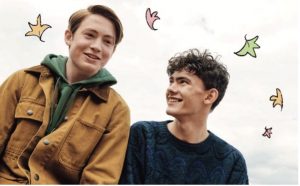 I’m sure many of you have watched, or at least heard about, Netflix’s newest hit Heartstopper. If you haven’t, it’s the story of two guys at an English secondary school who end up falling in love, and is adapted from the graphic novels of the same name by Alice Oseman. It consists of an amazing cast of LGBTQ+ characters going through issues that will be relatable for most LGBTQ+ people. It does this in a way which makes it incredibly heart-warming and doesn’t follow the usual tropes of many LGBTQ+ love films which tend to end in heartbreak.
I’m sure many of you have watched, or at least heard about, Netflix’s newest hit Heartstopper. If you haven’t, it’s the story of two guys at an English secondary school who end up falling in love, and is adapted from the graphic novels of the same name by Alice Oseman. It consists of an amazing cast of LGBTQ+ characters going through issues that will be relatable for most LGBTQ+ people. It does this in a way which makes it incredibly heart-warming and doesn’t follow the usual tropes of many LGBTQ+ love films which tend to end in heartbreak.
Heartstopper is such an important show for representation and bringing certain issues and aspects of being LGBTQ+ into the mainstream. It spreads a message that LGBTQ+ people don’t have to settle for bad relationships but are able to find happiness. It gives positive bisexual and transgender representation, which is often lacking compared to gay and lesbian representation. The show also tackles the issue of being LGBTQ+ in sport – something that still faces lots of stigmas.
But Heartstopper isn’t the only heart-warming show out there that gives positive but relatable representation to LGBTQ+ characters and relationships – even if many articles I’ve read are suggesting it is the first to do so.
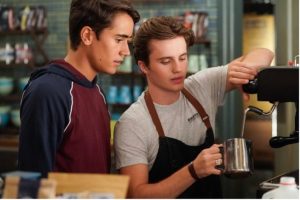 Love, Victor – a spin off from the 2018 film Love, Simon (which itself was adapted from the book Simon vs the Homosapien Agenda by Becky Albertalli) – is airing its third and final season this month. It follows the story of Victor as he begins life at a new school, whilst also starting to question his sexuality. Whilst the first season focuses on the idea of sexuality and coming out, the second and third seasons explore the idea of life of a young LGBTQ+ person after coming out.
Love, Victor – a spin off from the 2018 film Love, Simon (which itself was adapted from the book Simon vs the Homosapien Agenda by Becky Albertalli) – is airing its third and final season this month. It follows the story of Victor as he begins life at a new school, whilst also starting to question his sexuality. Whilst the first season focuses on the idea of sexuality and coming out, the second and third seasons explore the idea of life of a young LGBTQ+ person after coming out.
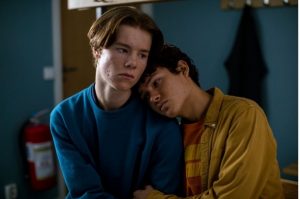
Another favourite of mine is Young Royals – a Swedish show on Netflix. Even if you’re not a fan of subtitles, it is so good that you won’t mind. The show follows the fictional Prince Wilhelm of Sweden whilst he attends boarding school and falls in love with one of his classmates. He is second in line to the throne and doesn’t want his family to go through any more scandals. It’s a show that you won’t want to stop watching, until you realise you’ve finished the first season and have to wait months for the second to be released.
In the world of animation, both She-Ra and the Princesses of Power, and The Owl House are notable mentions for their vast array of LGBTQ+ representation and strong story telling. She-Ra and the Princesses of Power, which is the reboot of a He-Man spin-off, featured multiple bisexual, lesbian, and 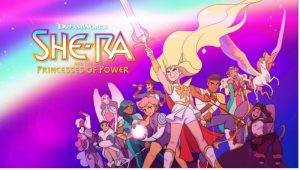 transgender characters – even if some of their identities weren’t really referenced within the actual show at all and those that were referenced weren’t until the last season. It focusses on Adora as she joins the Rebellion to fight the Horde, after gaining the power to transform into She-Ra – a 6ft warrior woman. If you want a show that is fun and silly and yet still provides strong characters and emotional moments, then it is definitely worth a watch. The Owl House follows Luz the human as she stumbles through a portal into the Demon Realm, where she trains with Eda the Owl Lady in the ways of magic. Luz herself is
transgender characters – even if some of their identities weren’t really referenced within the actual show at all and those that were referenced weren’t until the last season. It focusses on Adora as she joins the Rebellion to fight the Horde, after gaining the power to transform into She-Ra – a 6ft warrior woman. If you want a show that is fun and silly and yet still provides strong characters and emotional moments, then it is definitely worth a watch. The Owl House follows Luz the human as she stumbles through a portal into the Demon Realm, where she trains with Eda the Owl Lady in the ways of magic. Luz herself is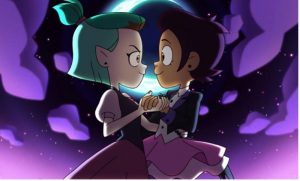 bisexual, and the show also features an array of LGBTQ+ characters – including Raine Whispers who provides notable non-binary representation. The show is made by Disney – a company who have been lacking in any form of LGBTQ+ representation in the past. These two shows allow children to grow up seeing LGBTQ+ representation on their screens, which is vital for young people to see that its okay to be LGBTQ+, whether they are LGBTQ+ or just allies.
bisexual, and the show also features an array of LGBTQ+ characters – including Raine Whispers who provides notable non-binary representation. The show is made by Disney – a company who have been lacking in any form of LGBTQ+ representation in the past. These two shows allow children to grow up seeing LGBTQ+ representation on their screens, which is vital for young people to see that its okay to be LGBTQ+, whether they are LGBTQ+ or just allies.
In wider media, shows such as The Haunting of Bly Manor, Our Flag Means Death, and Sense8 give some amazing representation too. The Haunting of  Bly Manor is a horror show on Netflix that tells the stories of the many people – both living and dead – who inhabit Bly Manor, when a new au pair arrives at the house. Whilst being haunted, an LGBTQ+ romance blooms. Our Flag Means Death is a recently released action/comedy about pirates from director Taika Waititi. Hilarious hijinks ensue when Stede Bonnet leaves the life of an American aristocrat to become a pirate
Bly Manor is a horror show on Netflix that tells the stories of the many people – both living and dead – who inhabit Bly Manor, when a new au pair arrives at the house. Whilst being haunted, an LGBTQ+ romance blooms. Our Flag Means Death is a recently released action/comedy about pirates from director Taika Waititi. Hilarious hijinks ensue when Stede Bonnet leaves the life of an American aristocrat to become a pirate captain and then meets the feared Captain Blackbeard. The show features a diverse range of LGBTQ+ characters (with prevalent non-binary, gay and bisexual representation). Sense8 follows a group of 8 people from around the world who one day are suddenly able to communicate with e
captain and then meets the feared Captain Blackbeard. The show features a diverse range of LGBTQ+ characters (with prevalent non-binary, gay and bisexual representation). Sense8 follows a group of 8 people from around the world who one day are suddenly able to communicate with e ach other through a psychic link that forms between them. It features a diverse set of LGBTQ+ and non-LGBTQ+ characters who are all well written with meaningful relationships and impact on the plot. These sorts of shows normalise LGBTQ+ characters by not really focussing on the fact thatthey are LGBTQ+. The characters are LGBTQ+ but aren’t treated any differently for it, which makes them well-written characters who provide some very good representation.
ach other through a psychic link that forms between them. It features a diverse set of LGBTQ+ and non-LGBTQ+ characters who are all well written with meaningful relationships and impact on the plot. These sorts of shows normalise LGBTQ+ characters by not really focussing on the fact thatthey are LGBTQ+. The characters are LGBTQ+ but aren’t treated any differently for it, which makes them well-written characters who provide some very good representation.
Whilst Heartstopper is a great show for presenting positive LGBTQ+ characters and relationships, it is by no means the first to do so and let us hope it won’t be the last. There also exist many more examples of well-written LGBTQ+ characters in TV but, unfortunately, I cannot list them all. Happy Pride Month!


nice post